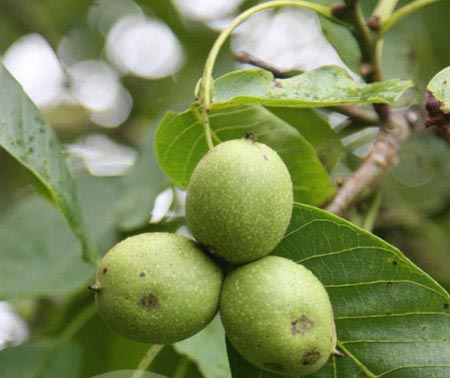Detecting human sex hormones in plants
US scientists say they found progesterone, a female sex hormone that maintains the development of the fetus, in plants.

Progesterone exists in walnuts.Photo: crocus.co.uk.
Scientists have long believed that only animals can produce progesterone. A hormone secreted by the ovaries, progesterone helps the uterus prepare for pregnancy and maintain pregnancy. Progestin, a synthetic form of progesterone, is used in birth control pills and other medications.
Science Daily said that Guido F. Pauli - a doctor of the University of Medicine, Chicago, USA - and colleagues used nuclear resonators and large spectrophotometers to search for progesterone in the leaves of plants. Common walnuts and British walnut trees.
On February 7, the team announced that progesterone actually exists in walnut leaves. Pauli believes that this finding is of great significance.
"While the role of progesterone has been studied a lot in animals, it is almost impossible to find in plants , " Pauli said.
The team thinks that progesterone - like other steroid hormones - may be a controlling factor that evolved billions of years ago when animals and plants appeared on the earth. The new discovery could change the perception of progesterone evolution and function in organisms.
Previously, scientists have identified a form of progesterone-like material in plants and thought that the hormone itself may exist in plants. But so far they have not really found it. In addition to the progesterone in the leaves of walnut plants, Pauli group also found five types of progesterone-related steroids in a plant belonging to the yellow buttercup family.
The study was published in the journal Natural Products of the American Chemical Society.
- Detecting female sexual hormones in plants
- Detecting the 'power' of female hormones in the male body
- Apply plants with love hormones
- Hormone love makes people lie more blatantly
- Detecting hormones that are resistant to irritation from marijuana
- Why is the fruit ripe?
- Why are women always beautiful in the eyes of a lover?
- Hormone love helps treat autism
- Cowardly or brave are caused by hormones
- 600 species of plants disappear, threatening human survival
- Detecting new distribution areas of plants in the Red Book
- 'Kiss Hormone' restores desire in women
 Why do potatoes have eyes?
Why do potatoes have eyes? 'Tragedy' the world's largest carnivorous life: Death becomes ... public toilet
'Tragedy' the world's largest carnivorous life: Death becomes ... public toilet Tomatoes were once considered 'poisonous' for 200 years
Tomatoes were once considered 'poisonous' for 200 years Detecting microscopic parasites on human face
Detecting microscopic parasites on human face